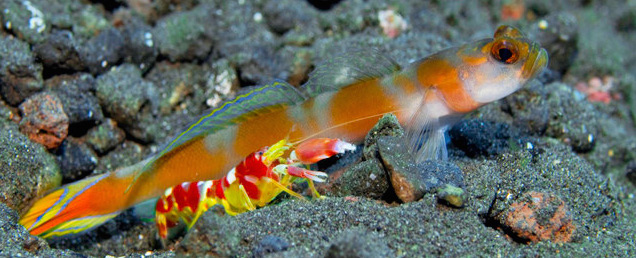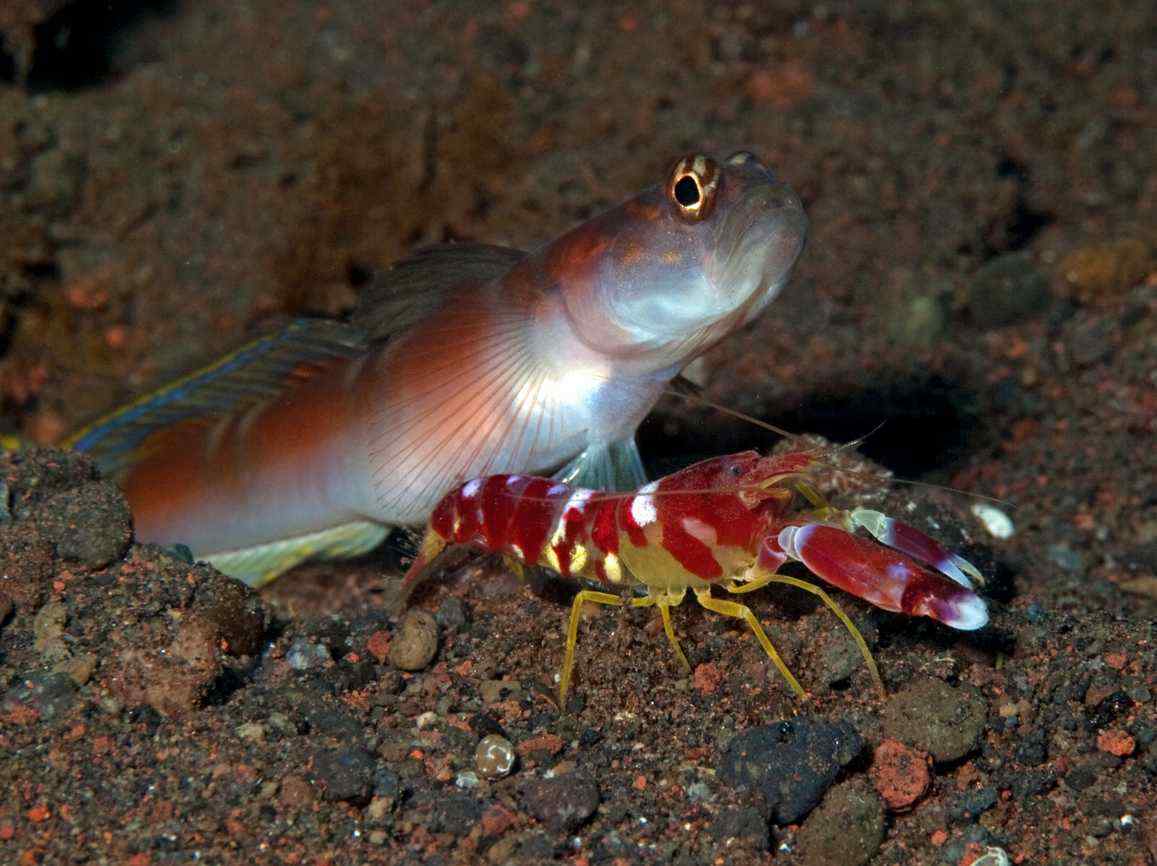Symbiosis in Pistol Shrimp and Goby Fish
Biology 342 Fall 2014
Sam Ramirez, Jaclyn Calkins
Reed College
Ontogeny
Development of an Organism's Traits and Behaviors Over Its Lifetime

Ontogeny is the study of the origin and the development of an organism or species from gamete to mature adult form. Thus, the development of the social symbiotic relationship between goby fish and pistol shrimp can be investigated throughout the course of their lifecycles.
What social behaviors are characteristic of pistol shrimp and goby fish outside of their behavior in shrimp-goby pairs?
Most snapping shrimp are extremely social creatures, a quality that they maintain and use as a safety mechanism throughout their lives. Pistol shrimp often build burrows deep under rocks or within sea sponges, and prefer to live with company of a fish or other shrimp (particularly a mate). Colonies of some snapping shrimp, with up to 350 members, have been found living in sponges together (Duffy et al. 1999), forming social societies similar to those of bees: all of the shrimp are the offspring of a large female who acts as queen. There are workers who look after the young and soldiers on defence.
When they pair off, species of pistol shrimp that form shrimp-goby pairs are monogamous and territorial, with females performing parental care. Male and female partners share other duties like territorial defense, burrow construction, and foraging duties by returning food to the burrow, where both partners consume it together.

Where do shrimp-goby pairs develop and how do they communicate with each other?
It has been debated about whether the goby finds the shrimp first, or if the shrimp finds the goby: the only thing we know for sure is that they use different methods. It has been theorized that gobies find their partners mainly using their visual ability, while chemical signals seem to have a prevalent role from the shrimp's point of view: which is a likely hypothesis considering the poor visual ability of the crustacean. The shrimp-goby relationship can begin shortly after the goby settles from planktonic life, when the fish is almost a centimeter long. This predisposition suggests that the pairing could be largely innate. There are types of goby that live together with different shrimp, but there are also specialists that live with just one species of shrimp (Karplus et al., 1987). When sexual maturity is reached and potential mates are present, normally a pair of gobies shares a burrow with a pair of shrimps. Shrimp leave the burrows only during daylight in the company of the goby. The goby is essentially the guardian of the burrow, as the shrimp has very limited visual abilities. Because of this, the shrimp, while the pair is outside the burrow, holds one antennae on the goby for safety. If the goby sees a potential threat, it will give a slight tail flick. This vibration is picked up by the shrimp who consequently darts into the burrow. If the danger approaches further, the goby will shoot into the burrow and the shrimp will quickly follow.